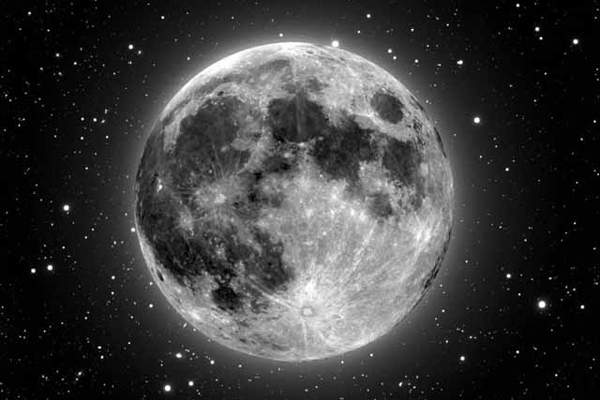
While recovering from turkey and stuffing overload this Thanksgiving weekend, you might want to look for a pretty celestial sight on Saturday evening (Nov. 26).
About a half-hour after sunset, look low to the southwest sky. You'll need a view with no tall obstructions, such as buildings or trees, that might block the scene.
There, hanging just above the horizon, will be the slender sliver of a crescent moon, less than two days after it has passed new phase.
It will be only 4 percent illuminated, and in binoculars against the twilight sky, you might even obtain a glimpse of the phenomenon known as "Earthshine," which is light that has traveled from the sun to the Earth, reflected toward the moon and then back to Earth. The result is that you can dimly see the unilluminated part of the moon's disk glowing with a bluish-gray light.
And to the left of the moon and slightly above it, will be the most brilliant object in the night sky, save for the moon itself: the planet Venus. This eye-catching pair will be visible in the dusk for about 90 minutes after sunset before they too disappear beyond the southwest horizon.
Increasing splendor
During the coming days and weeks, Venus will show itself with increasing prominence and become dramatically more visible, shining brightly low in the southwestern sky soon after sunset. The interval between the time of sunset and when Venus sets will increase very respectively from about 1 1/2 hours now, to 2 1/2 hours by the end of December.
Get the Space.com Newsletter
Breaking space news, the latest updates on rocket launches, skywatching events and more!
For those living at mid-northern latitudes (near +40 degrees), this dazzling planet is currently less than 15 degrees up at the time of sunset. To gauge how high this is, recall that your clenched fist held at arm's length measures roughly 10 degrees in width.
But when we get to New Year's Eve, Venus will be noticeably higher, shining at an altitude of about 23 degrees (more than "two fists" up from the horizon) at sundown.
And this is only the beginning, folks.
Admittedly a modest beginning at best right now, but ultimately this trend will evolve by early next spring into the loftiest variety of an evening apparition of Venus.
If you end up getting a telescope during the upcoming winter holidays, you'll likely be disappointed with your view of Venus; it still appears relatively small and roundish despite the allure of its dazzling naked-eye showing.
Be patient, however. The view will slowly get better in the coming months. Indeed, as far as Venus is concerned, the best is yet to come.
Joe Rao serves as an instructor and guest lecturer at New York's Hayden Planetarium. He writes about astronomy for The New York Times and other publications, and he is also an on-camera meteorologist for News 12 Westchester, N.Y.
Join our Space Forums to keep talking space on the latest missions, night sky and more! And if you have a news tip, correction or comment, let us know at: community@space.com.

Joe Rao is Space.com's skywatching columnist, as well as a veteran meteorologist and eclipse chaser who also serves as an instructor and guest lecturer at New York's Hayden Planetarium. He writes about astronomy for Natural History magazine, Sky & Telescope and other publications. Joe is an 8-time Emmy-nominated meteorologist who served the Putnam Valley region of New York for over 21 years. You can find him on Twitter and YouTube tracking lunar and solar eclipses, meteor showers and more. To find out Joe's latest project, visit him on Twitter.









